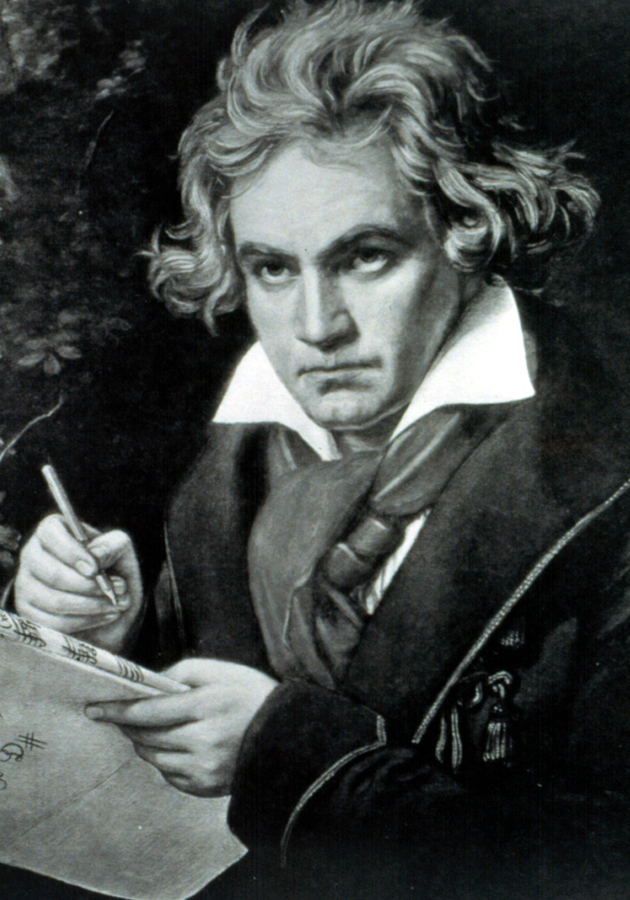In 2013, the French economist Thomas Piketty released “Capital in the Twenty-First Century,” a 700-page doorstopper that made him an academic “rock star.” Immensely researched and widely praised, the book piled graph upon graph to demonstrate that capitalism inexorably increases inequality and that – unless the trend is checked by a welfarist government – social instability may be the inevitable outcome of this seemingly innocuous tendency.
“In large part a sequel to ‘Capital in the Twenty-First Century,’” Piketty’s equally monumental “Capital and Ideology” weighs in at about 1,100 pages and picks up where its predecessor left off. The book offers “an economic, social, intellectual, and political history of inequality regimes, that is, a history of the systems by which inequality is justified and structured.”
So, get ready to learn why inequality is not a natural economic phenomenon, and prepare to discover how political elites have tried to naturalize it throughout history so they could benefit from it.
Taking ideology seriously
“The history of all hitherto existing society is the history of class struggles,” wrote famously Karl Marx and Friedrich Engels in “The Communist Manifesto” in 1848. A little less than two centuries later, Piketty is tempted to reformulate the declaration as follows: “The history of all hitherto existing societies is the history of the struggle of ideologies and the quest for justice. In other words, ideas and ideologies count in history.”
At first thought, it may seem strange to claim that ideas matter as much as, say, technological innovations – after all, the Industrial Revolution was kickstarted by a steam engine. But even a superficial analysis of how we got to where we are today reveals that societies are mostly governed and reformed through ideas; innovations come after. Think of it this way: even though past-era societies may seem vulgarly unfair to our modern eyes, for their time and age, they were consistent and sound enough to be stable and functional for long periods of time. This was not because of their intrinsic values, but because of the narratives devised by the ruling political elites aiming to naturalize the circumstances that had put them in power.
These narratives are what Piketty calls “ideology,” a word he uses to refer to “a set of a priori plausible ideas and discourses describing how society should be structured.” For example, as strange as it might seem today, for thousands of years, only a few philosophers and historians dared to question the so-called “divine right of kings,” which asserted that kings derived their authority from God and could not be held accountable to an earthly authority, such as a parliament or a people’s court. Before Darwin, this prevailing narrative was a plausible construct of ideas that gave immense power to pharaohs, sultans and Caesars alike, and virtually no rights to slaves. Even so, the ideology seemed believable enough to endure for millennia, during which the majority of commoners willingly accepted their subservient roles.
It may seem that today, in the 21st century, we are way beyond such inhuman ideologies, but Piketty begs to differ. After all, even though we are still unequal, a growing number of people believe this to be just, causing – either inadvertently or very deliberately – a further rise of inequality. Is this a vicious or a virtuous cycle? Put differently, is inequality an enemy or a friend of progress? To answer this question, let’s take a globe-spanning romp through history,
Inequality regimes
“All history shows,” remarks Piketty, “that the search for a distribution of wealth acceptable to the majority of people is a recurrent theme in all periods and all cultures.” “Acceptable” – and this is an important point – doesn’t mean “just.” The objective of the ruling elites is rarely a just society; more often than not, it is a stable society, and one that allows them to remain on top. And since perceptible inequality tends to make things unstable, “the elites of many societies, in all periods and climes, have sought to ‘naturalize’ it.”
True, many would say today that there’s no need to naturalize inequality: after all, it has a basis in “nature.” However, history proves otherwise. Put in the simplest of terms – and in the form of a rhetorical question – if inequality is natural, then why does it vary so widely “in time and space, in structure as well as magnitude”? Moreover, if we can so straightforwardly speak about past societies as being unjust and unreasonable as far as the wealth distribution is concerned, how do we know if future thinkers won’t speak of our time in a similar manner? “The inequalities and institutions that exist today are not the only ones possible,” comments Piketty. “Change is permanent and inevitable.”
For Piketty, “inequality is neither economic nor technological – it is ideological and political.” More specifically, it is generated by “inequality regimes,” which Piketty defines as “sets of discourses and institutional arrangements intended to justify and structure the economic, social, and political inequalities of a given society.” He differentiates two central inequality regimes in history – ternary and ownership – which he then contrasts and compares with the dominant ideologies of the 20th century: Social-Democratic and neoproprietarian.
Ternary societies: trifunctional inequality
For Piketty, a ternary or a trifunctional society is one whose structure comprises three functional groups: clergy, nobility, and a third estate (workers). Tasked with education and edification, the clergy usually included the religious and intellectual classes, whereas the nobility consisted of soldiers and aristocrats who were responsible for security and stability. If they weren’t slaves, the workers – the third estate – usually belonged to their local noble or lord. Even though with varying characteristics, this trifunctional pattern can be found in nearly all premodern societies throughout the world.
Ternary societies were class societies, as every individual belonging to them had his or her role preassigned at birth. Though class mobility was possible, it was pretty rare for a worker to become a nobleman; the opposite was even rarer. The rigidness of the socioeconomic structure was maintained by the Church and a prevailing body-metaphor, which conveniently positioned the clergy as the head of the state, the nobility as its body, and the workers as its arms and legs. Though this may seem as a far cry from what we see in the world these days, Piketty claims that “inequalities linked to different statuses and ethnoreligious origins, whether real or perceived, continue to play a key role in modern inequality.” But we’ll get there in a minute.
For now, it’s important to note that even in the highly unjust ternary societies of medieval Europe, the dominant classes had to provide an explanation for how their dominance served the general interest. In the words of Piketty: “The trifunctional justification of inequality that one finds in ternary societies – namely, the idea that each of the three social groups fulfills a specific function and that this tripartite division of labor benefits the entire community – must enjoy a minimum degree of plausibility if the system is to endure. In ternary or any other kind of society, an inequality regime can persist only through a complex combination of coercion and consent. Pure coercion is not enough.”
Put simply, even the slaveowners of the 19th century tried unceasingly to convince their slaves that they weren’t born to be anything else. In ternary societies, explanations of this kind were concocted by the Church, which was in turn paid a tithe by the nobility to invent an ideology that would benefit them both and keep the status quo. Though originally a voluntary contribution, the tithe was transformed into a legally enforced tax which “transformed the Church into a de facto state with the means to regulate social relations and fulfill leadership functions that were at once spiritual, social, educational, and moral.” And so the status quo remained unchanged for centuries.
Ownership societies: emancipation and wealth inequality
Though Jesus Christ was pretty straightforward when he said that it was “easier for a camel to go through the eye of a needle than for a rich man to enter the kingdom of God,” the medieval clergy had to make “pragmatic accommodations” to this philosophy once the Church had accumulated vast wealth via tithes. So, they introduced a distinction between acceptable wealth – the one the clergy and the nobility needed to carry out their “mission of shaping the political, religious, and educational structure of society” – and unacceptable wealth, the one the workers had to stay away from if they wished to enter the kingdom of heaven. This, in essence, was the inequality regime that governed all ternary societies.
Over time, however, the inexorably widening inequality – propelled by colonial expansions, the industrial revolution, and the rise of capitalism – produced instability, which eventually led to several 18th-century revolutions, the most important being the French and the American. These two came with their own ideologies which, thanks to their anticlericalism, contributed to the transformation of the very fabric of trifunctional societies. So, a new type of inequality regime was born: an ownership, or proprietarian, society.
While medieval societies praised chivalry, subservience and religious purity, the only thing that mattered after the revolutions was the sum of an individual’s wealth. True, proprietarian societies had a very vital emancipatory dimension, effacing the inflexible status and ethnoreligious differences of premodern regimes, but in doing so, they paved the way for a new type of economic inequality, in which income and wealth disparity started attaining unbelievable (and previously unimaginable) levels.
Contrary to the claims of libertarian market fundamentalists, stats demonstrate, and quite convincingly, that the unfettered capitalism revved up by the French and the American revolutions, was beneficial only to a minority of people, with 85% to 90% of the wealth being held by the wealthiest 10%, averaged over the period of 1880 to 1914. Put into context, a century after the abolition of privileges in 1789, the concentration of wealth in France was at a higher level than at the time of the French Revolution, which, ironically, wasn’t fought only for liberty and brotherhood, but for equality as well. Far from being the exception, the French ownership society could serve as a model. Societies built on such extreme disparities were bound to become unstable and collapse one day – which they did, with the two World Wars of the 20th century.
Interlude: preparing the grounds for the great transformation
Before the French Revolution, elites ruled over the third estate, both de jure and de facto. But at the beginning of the 19th century, they chose to cede their juridical (jur-IH-di-kal)authority to the State in return for guaranteed protection of their property. That way, property rights gained quasi-sacred status, regardless of origin or extent, allowing the majority of the ever-privileged to remain in power.
Even though the radical philosophers of the Enlightenment (such as Denis Diderot in France and Thomas Paine in the United States) argued for redistribution of property and tax rates up to 90% on the highest incomes, moderates (such as Voltaire or Adam Smith) feared that “eliminating [the high classes of the past] without compensation would undermine the whole system of rents and unequal ownership. Because no one could say where such a process would end, there was a temptation to maintain old rights in one form or another.” Piketty refers to this kind of thinking as the Pandora’s Box Syndrome.
In other words, thanks to a few ideological tweaks, most of the wealthy could remain wealthy even after the revolutions. Just as ternary societies safeguarded the wealth of the rich via a fictional explanation of their ethnoreligious preeminence over other people, ownership societies chose to protect it by never questioning its origin. Wherever they appeared – and they flourished all over Europe and North America throughout the 19th century – ownership societies were “based on a quasireligious defense of property rights as the sine qua non of social and political stability.” It turned out it was the other way around: as the rich got richer and the poor got poorer, wars became inevitable.
The destruction occasioned by the wars reduced inequality, as it hurt much more those who owned a great deal than those who owned nothing. The twilight of colonialism and the emergence of socialism also contributed to this fact. However, the most important reason for the reduction of inequality after the wars was “a set of fiscal and social policies that made societies not only more egalitarian but also more prosperous than they had ever been before.” These policies were introduced worldwide in the aftermath of the Second World War, during “the golden age of social democracy.”
Social Democratic societies: incomplete equality
For all their flaws, the postwar social democratic governments of the world proved at least three things: 1) that extreme inequality does not need to be an inevitable fact of a market-based society; 2) that inequality is not a mark of progress; and 3) that, rather than being unpredictable as the moderate Enlightenment philosophers had feared, nonviolent, juridical redistribution may be the only path to stability. Between 1950 and 1980, thanks to several contributing factors, all five major regions of the world (United States, Europe, India, Russia, and China) enjoyed a relatively egalitarian and prosperous phase.
The following few mechanisms can be considered responsible for the collapse of inequality and private property in the first half of the 20th century, and important contributors toward the advent of egalitarian societies during the subsequent three decades:
- The Great Depression. Triggered by the Wall Street crash of 1929, the Great Depression left a quarter of the industrial labor force in the West jobless in the span of three years and caused a shift in favor of interventionism almost worldwide. Governments adopted Keynesian (CANE-zee-ahn) economic doctrines, and people naturally started doubting the elites who had apparently led the world to the brink of the abyss, while enriching themselves.
- Communist revolutions. Convinced that capitalist ownership societies had failed them, people around the globe started advocating for the abolition of private property and bourgeois democracy. This resulted in several communist revolutions which contributed both directly and indirectly toward the foundation of social democratic societies in the Western world.
- Expropriations and nationalizations. In communist societies, land was expropriated from wealthy individuals and all public property was nationalized. But similar things happened in the West, where a substantial segment of the economic elite was suspected of cooperating with the Fascists. For example, the factories of French industrialist and pioneer of the automobile industry Louis Renault were permanently expropriated by the French government after the war, owing to his suspected collaboration with the Germans during the occupation.
- Public sectors and real estate regulations. The postwar nationalizations resulted in very large public sectors in many countries after the war. This led to lower stock market valuations of private firms in these countries without affecting their economic growth. The regulation of real estate and financial markets had a similar effect, since it reduced the market value of the assets of the wealthiest property owners.
- Progressive taxes on income and estates. Progressive taxation was possibly the most important policy that contributed to the greater equality of social democratic societies. In the period 1932 to 1980, “the top marginal income rate averaged 81% in the United States and 89% in the United Kingdom.” Moreover, between 1930 and 1960, “the total tax paid (in all forms, direct and indirect) by the top 0.1 and 0.01% of people with the highest incomes fluctuated between 50 and 80% of their pretax income, whereas the average for the population as a whole was 15-30% and, for the poorest 50%, between 10 and 20%.”
Neoproprietarian societies and hypercapitalism
“Clearly,” writes Piketty tongue-in-cheek, “the fact that top marginal rates remained above 80% for nearly half a century did not destroy capitalism in the United States – quite the opposite.” Yet, nowadays, redistributive policies such as progressive taxation or real estate regulations are deemed “communist measures” by conservatives and market fundamentalists alike, and described as a certain path to failure. These are the inner workings of the inequality regime that governs our relations ever since the 1980s: the neoproprietarian society.
Most of the allegedly communist policies of the social democratic era were widely and wholeheartedly accepted by the capitalist classes of Western Europe out of necessity. There was the specter of communism hanging above their heads and, “compared with the threat of widespread expropriation, a progressive tax suddenly seemed less frightening.” Just for illustration, most French politicians refused to vote for a 2% income tax in 1914. Faced with socialist movements after the successful Russian Revolution of 1917, almost everybody approved rates of 60% on the highest incomes. In fact, one could argue that the dramatic failure of the communist experiment in the Soviet Union was “one of the most potent factors contributing to the return of economic liberalism since 1980–1990 and to the development of new forms of sacralization of private property.”
With communism no longer a threat, the welfare state went through a process of rapid dismantlement in the West. During the Thatcher and Reagan era, laws were relentlessly passed, aiming at instituting private property regimes in every domain of human activity. That has led to the current era of hypercapitalist social order, which owes a lot to the proprietarian societies of the past. However, it goes a step further than them, with its zealous ideological proponents arguing not only that wealth redistribution would cause the destabilization of the entire system, but also that the rich should be entirely exempt from paying taxes because they have deserved their wealth for being job creators and contributors to global prosperity. Their immense riches, apparently, aren’t a reward enough.
This is the conceptual component that differentiates hypercapitalism from all other previous societies. Unlike the ideologies of the ternary or ownership societies of the past – which at least tried to morally justify inequality as part of the natural order – the ideology of the neoproprietarian society considers inequality ethical in itself and explains it away as an inevitable element of meritocracy and a necessary aspect of progress. The opacity of the financial machinations of the wealthiest few today proves they really don’t need any justification whatsoever. Hailed as solitary heroes by the majority of people, the entrepreneurs of today are actually encouraged to pay less taxes to their governments than medium income families do, as countries around the world are aggressively fighting for their presence by way of deregulations and subsidies. Worst of all, the lack of control over international capital flows has allowed the richest to hide their money in various tax havens, such as the Cayman Islands. As a result, the levels of income inequality grow wider by the year.
Participatory socialism: a few (in)decent proposals
If a just society – as defined by Piketty – is “one that allows all of its members access to the widest possible range of fundamental goods,” then modern 21st century societies are anything but. Nowadays, only a small minority enjoys the real benefits of progress. Worse still, this small minority has a disproportionately large say in public matters, contributing to the creation of legal frameworks that further advance its causes. If history has taught us anything, inequality may lead to instability, and instability benefits nobody. So, can we do something today to prevent the financial meltdowns and civil wars of tomorrow?
Piketty claims that we can, suggesting the implementation of several measures that should reduce the rampant social inequality before it is too late. By his own admission, his proposals derive from the democratic-socialist tradition, so he groups them under the umbrella term “participatory socialism” to simultaneously “emphasize the goal of participation and decentralization and to sharply distinguish this project from the hypercentralized state socialism that was tried in the twentieth century in the Soviet Union and other communist states.” Here are a few of the measures he discusses:
- Social ownership. Thanks to a few “hard-fought battles waged by unions and their political allies,” workers’ representatives maintain at least a third of the seats on the corporate boards of directors in Swedish and German companies. Consequently, they are able to participate in managing the businesses and counteract “the often-harmful short-term focus of shareholders.” This co-management practice has been in place for decades now, and all available evidence shows that it has been a great success.
- Progressive wealth taxation. In Piketty’s opinion, inheritance and income taxes are not enough to promote circulation of capital, and must be complemented by a progressive annual tax on wealth. He advocates for a wealth tax that is higher than the average increase in wealth and for a top income tax rate of 90%. He also advocates for taxes on externalities such as pollution to be integrated into the progressive income tax, since carbon emissions are strongly concentrated among the wealthiest. A wealth tax, in other words, would simultaneously solve the two greatest problems we face today: inequality and global warming.
- Universal capital endowment. Measures such as progressive wealth taxation would make possible the funding of a universal capital endowment, wherein every individual would be guaranteed an unconditional capital stock at his or her 25th birthday, the equivalent to 60% of the average wealth.
- Education for all. Piketty considers the failure of social democratic governments to address the problem of inequality in education the main reason for their demise. “Emancipation through education and diffusion of knowledge must be at the heart of any project to build a just society and participatory socialism,” he writes. “History shows that economic development and human progress depend on education and not on the sacralization of inequality and property.”
- Social federalism. Finally, in global terms, Piketty argues for a new form of globalization which he terms “social federalism.” In his opinion, “current international rules do not establish the neutral framework they purport to create but rather compel countries to adopt certain policies and directly restrict national sovereignty.” Unlike globalization, which is about countries adapting to the interests of the ultrarich, social federalism is about countries working together to check their power.
In Piketty’s opinion, the only real argument against measures such as this is the “Pandora’s box argument,” that is to say, the belief that “any challenge to private property will inevitably unleash uncontrollable chaos so that it is better never to open the box.” However, he replies, “the experience of the twentieth century showed that this argument is bogus: not only are steeply progressive taxes compatible with rapid growth; more than that, they are an important component of a developmental strategy based on relatively equal access to education and an overall reduction in inequality.”
Final notes
It is difficult to overestimate Piketty’s awe-inspiring breadth of learning or the immense importance of his two books. As popular and influential as “Capital in the Twenty-First Century” has been, “Capital and Ideology” may prove even more durable and at least as hotly debated.
Humbly, Piketty claims that its sole objective is “to enable citizens to reclaim possession of economic and historical knowledge.” Hopefully, it will achieve far more ambitious goals than this one, contributing to the creation of more equal and more just societies.
12min tip
The very fact that inequality has varied so widely “in time and space, in structure as well as magnitude” proves that it is a social, and not an economic, construct. For a more just society, counter the ideologies that defend inequality as a natural correlate of progress by reappropriation of economic and historical knowledge. Even if daunting, “Capital and Ideology” is a great place to start.





























